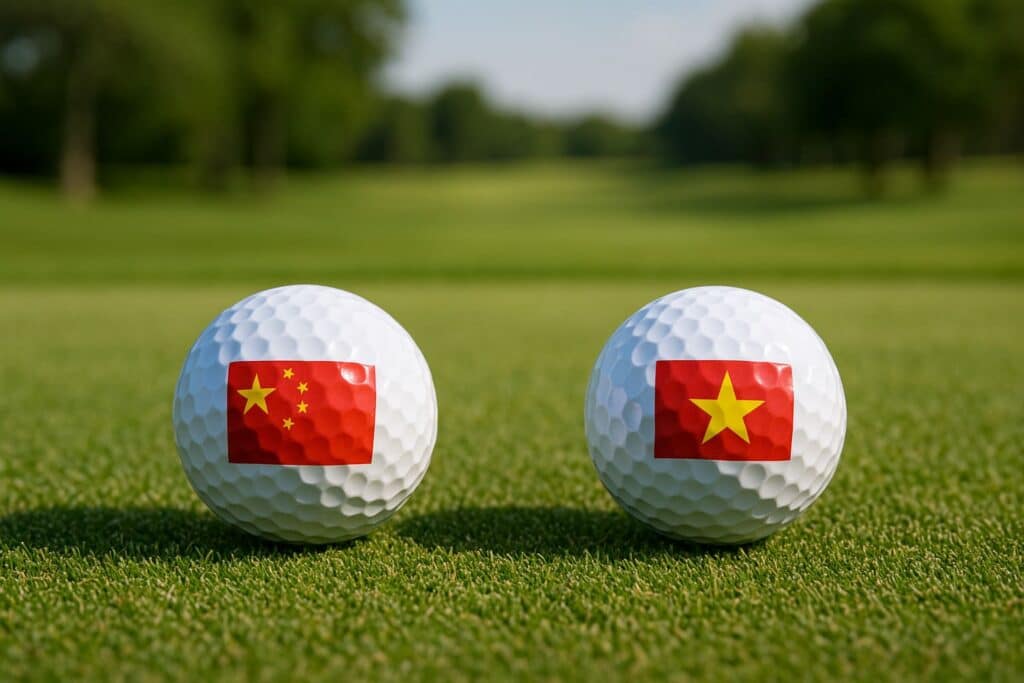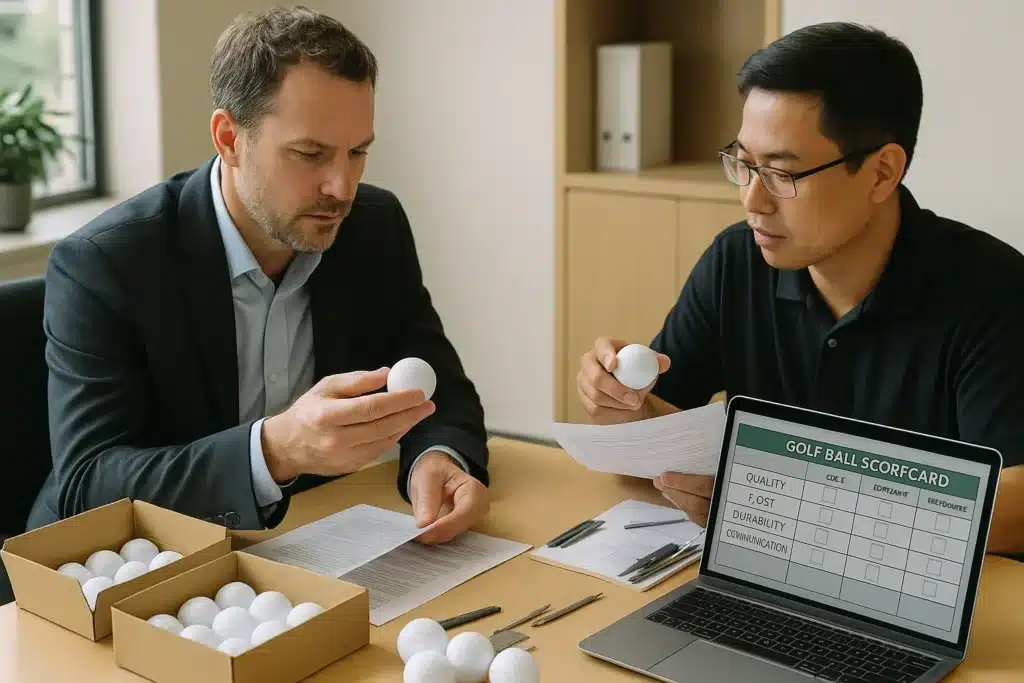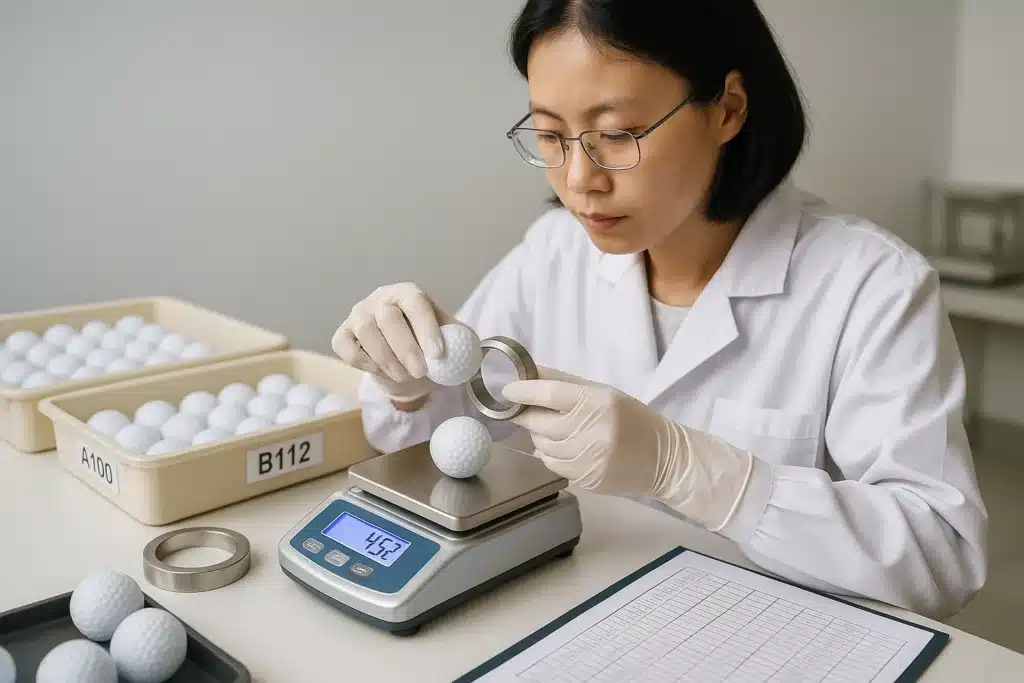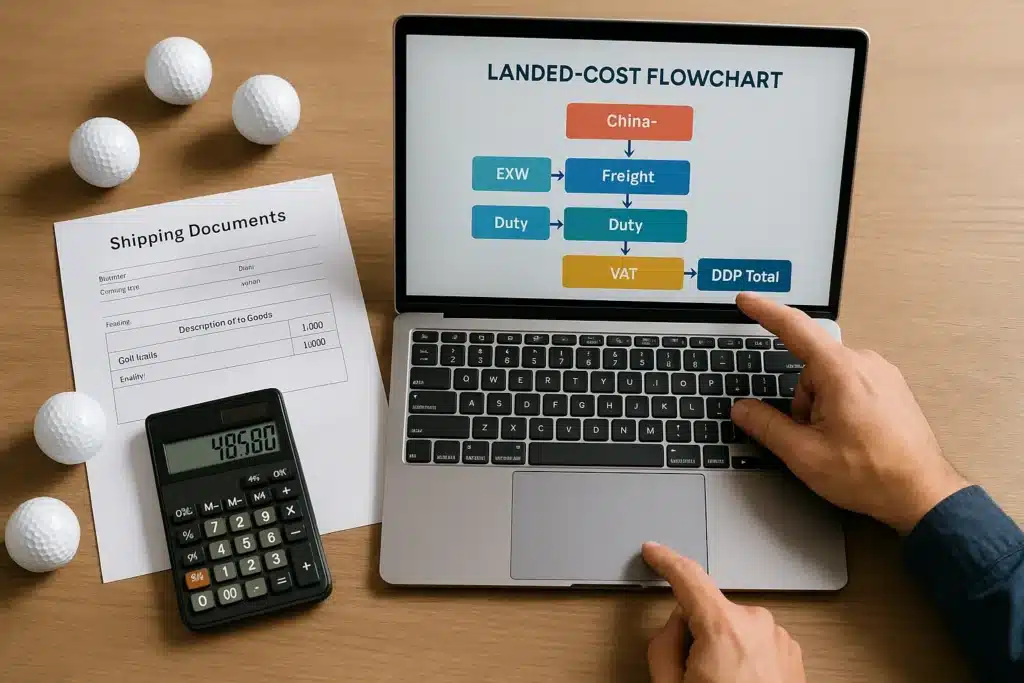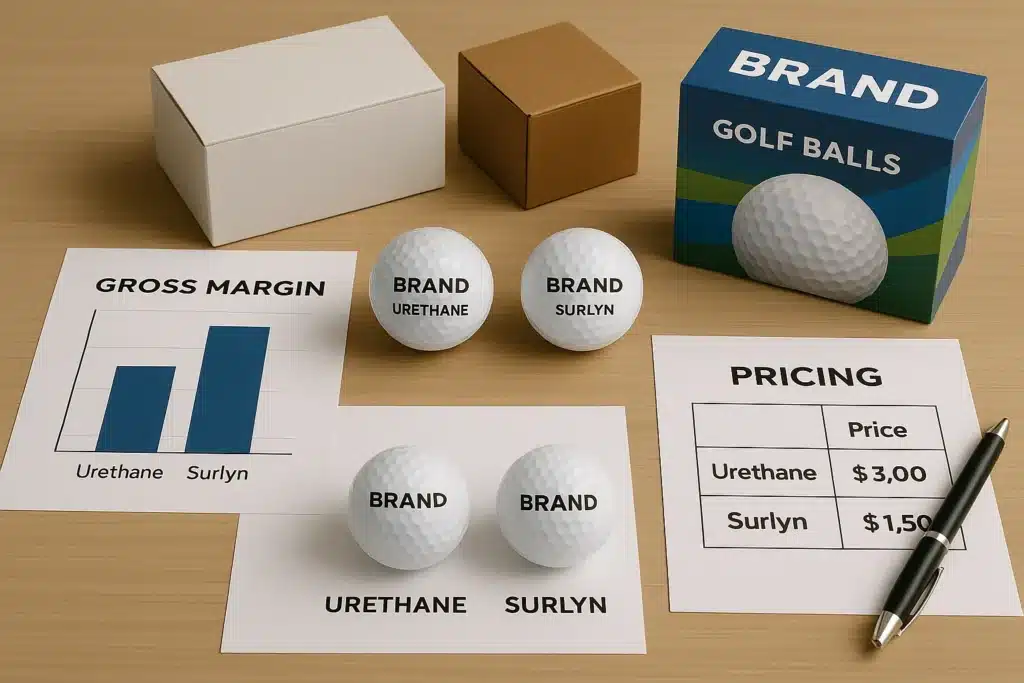Vietnam is better for tariff savings and labor efficiency; China is better for customization and lead time control.
When choosing between Vietnam and China for golf ball OEM, it comes down to supply chain maturity, tariff strategy, and production flexibility. China offers deep customization and fast lead times, while Vietnam provides tariff advantages and brand-backed quality control.
What’s the cost difference between Vietnam and China golf ball OEM?
Vietnam offers lower landed costs mainly due to its lower labor rates and FTA coverage.
Vietnam benefits from lower labor costs (30–50% below China) and wide coverage under FTAs, especially with the US, EU, and Japan. This often results in lower landed costs despite importing some materials.
China’s labor and environmental compliance costs are higher. But mature infrastructure, high automation, and large-scale operations help Chinese factories remain price-flexible, especially on bulk orders or lower-end balls.

Labor and tariff structure
Vietnam’s labor cost advantage pairs well with FTA tariffs. Manual processes (like hand-covering, logo spraying) are cheaper, and duty savings make a notable difference.
Manufacturing cost comparison
China offsets higher wages with automation. Machines handle complex layering and packaging efficiently, lowering per-unit cost in high-volume runs.
Price elasticity in OEM deals
China offers more negotiation room across SKUs. Especially in mid-to-low-tier segments, Chinese suppliers are more flexible with MOQ and unit pricing than brand-controlled Vietnam plants.
🔑 Key Takeaway: Vietnam wins on tariff-based landed cost, but China counters with scalable cost-efficiency and better price customization.
Which offers better quality control: Vietnam or China OEM golf balls?
Vietnam OEM excels in consistent high-end quality; China covers wider quality tiers with greater customization.
Vietnam’s golf ball factories mostly serve Japanese, Korean, or US brands. These plants maintain strict quality control, often under direct brand supervision.
Chinese OEMs supply everything from budget practice balls to tour-grade multilayer urethane models. Some factories match global standards, especially with third-party QC like SGS or ITS.
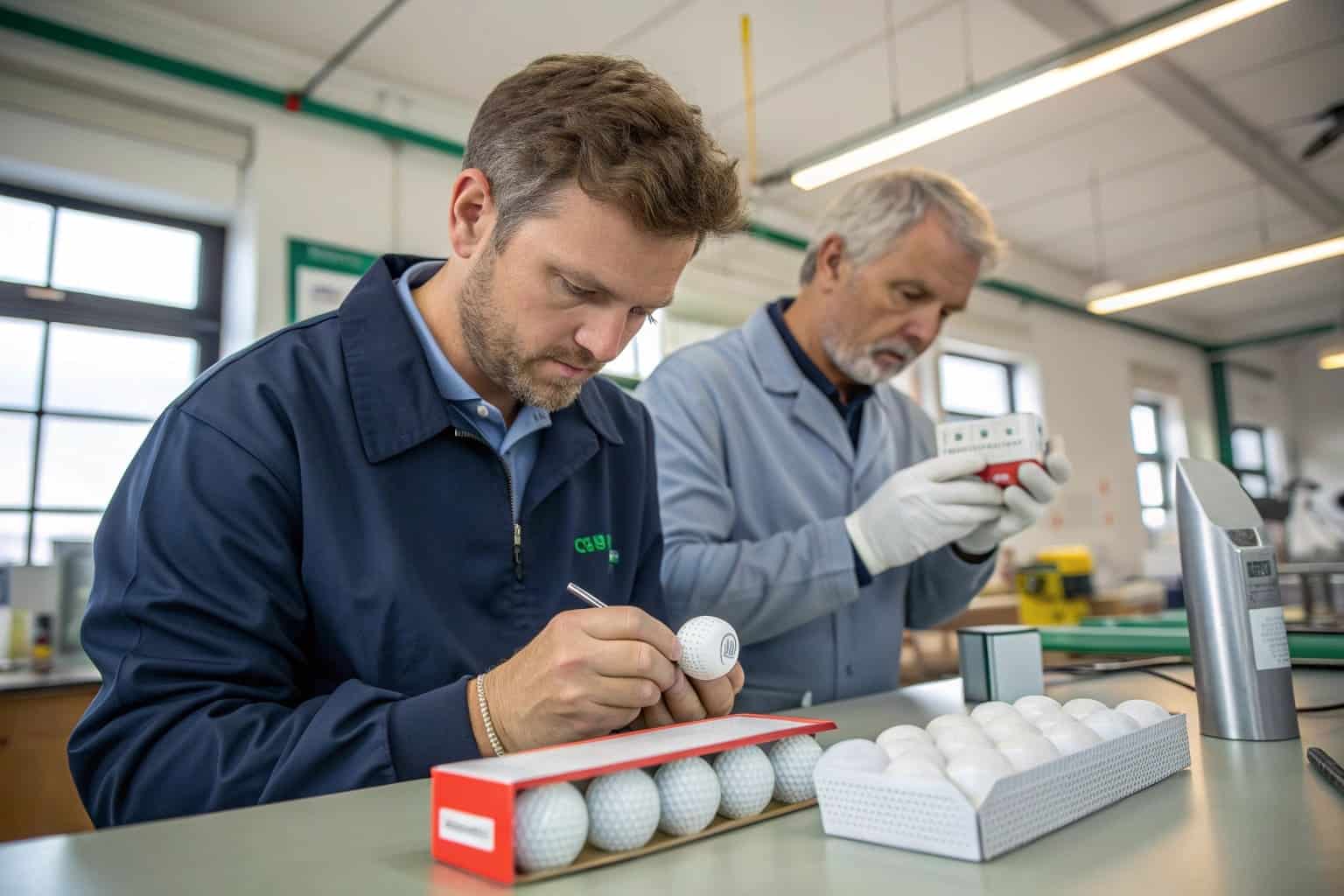
Brand control vs customization
Vietnam executes, China innovates. Vietnam follows brand specs with precision. China allows for personalized dimple design, print placement, or custom layering.
Quality tier coverage
China’s range includes training balls to PGA-grade urethane types. Vietnam focuses mainly on top-tier OEM.
QC process flexibility
Vietnam’s QC follows brand templates; China’s QC adapts to buyer preferences. Chinese factories may adjust tolerances or coating techniques based on client specs.
🔑 Key Takeaway: Choose Vietnam for stable, top-end OEM; choose China for flexible quality levels and customization.
How do lead times and supply chains compare in Vietnam vs China?
China provides faster lead times and better flexibility thanks to local sourcing; Vietnam is slower and less adaptable.
Chinese golf ball factories are often located within complete supply parks. Ball cores, covers, ink, and packaging are often sourced within the same province. This enables rapid turnaround, even for trial orders.
Vietnam still imports many components and prioritizes large-brand production, which affects lead times for smaller clients.
Component localization
China achieves near-total supply chain integration. Vietnam depends on imported PU and specialty rubber.
Order flexibility
China accommodates urgent, small, or seasonal orders. Vietnam plants may not have open capacity.
Lead time risks
Vietnam production slots may be pre-booked months ahead. China can often reshuffle among factories.

🔑 Key Takeaway: For speed and agility, China outperforms; Vietnam is suitable for forecasted, stable volume plans.
What are the trade risks and compliance issues in each country?
Vietnam enjoys more predictable trade terms, while China offers stronger testing and certification support.
Vietnam’s FTAs with the EU, US, and Japan reduce or eliminate import duties, giving OEM buyers notable cost advantages. China’s goods may face 301 or anti-dumping tariffs, especially in the US.
However, China’s export ecosystem is more experienced in certifications, audits, and 3rd-party inspections.
Tariff impact
Vietnam goods often enter tariff-free; Chinese golf balls may face 10–25% extra duty into the US.
Compliance ecosystem
China supports ITS, SGS, BSCI, and more. Buyers can easily request test reports, audits, or social compliance files.
Policy volatility
China’s trade status with the US is less predictable. Vietnam remains under lower-risk trade watchlists.
🔑 Key Takeaway: Vietnam wins on tariff stability; China offers stronger infrastructure for certifications and buyer compliance.
Which advantages matter more: Vietnam or China golf ball manufacturing?
Vietnam and China each offer strategic benefits for golf ball sourcing. Use the table below to compare which region better aligns with your business needs.
| Comparison Area | China Advantage | Vietnam Advantage | Best For… |
|---|---|---|---|
| Supply Chain | Integrated, fast, all-in-one | Relies on imports, longer chain | Urgent orders, flexible lead time needs |
| Automation | High-tech, scalable factories | Low-cost manual processes | Cost control via volume or automation |
| Customization | Logo print, eco materials, fast tweaks | Brand-controlled, less flexible | Retail branding or creative packaging |
| Lead Time | Short, flexible MOQs | Fixed by brand schedules | Small-batch or time-sensitive campaigns |
| Quality Range | Full spectrum: promo to tour-grade | Stable in high-end only | Wide SKU coverage vs premium consistency |
| Trade Policy | US-bound goods may face tariffs | FTA benefits to US/EU/JP | Margin-sensitive or duty-exempt routes |
💬 Considering China for Your Golf Ball OEM?
If you’re exploring options in China, feel free to reach out to us at Golfara. With over 12 years of experience producing and exporting to the US and EU markets, we understand what matters to buyers — quality, timing, and transparency.
We usually respond within 12 hours, with no charge or pressure. Asking doesn’t cost you anything — and it might just lead to the custom solution you’re looking for.
FAQs
Still have questions? Here are the most common things importers ask when comparing Vietnam and China for golf ball sourcing.
What is the biggest cost advantage of sourcing golf balls from Vietnam?
Vietnam offers lower landed costs mainly due to favorable trade agreements with the US, EU, and Japan, plus significantly lower labor rates.
Are Chinese golf balls lower quality than Vietnam-made ones?
Not necessarily. China covers a wider quality range. Reputable Chinese OEMs can match or exceed Vietnam’s quality with proper specs and inspections.
Which is more flexible for small-batch or trial orders?
China. Chinese OEMs are more responsive to low-MOQ orders and seasonal fluctuations, making them ideal for new product testing.
Can I get fully customized golf balls from Vietnam suppliers?
Customization in Vietnam is limited by brand-controlled operations. China offers greater freedom in color, print, and structure.
Conclusion
Vietnam or China – the better OEM choice depends on your needs. Choose Vietnam if you prioritize tariff savings, high-end consistency, and are aligned with brand volume models. Choose China if you need short lead times, lower MOQs, broader quality tiers, or want to explore product customization.
If you’re unsure, start with China for flexible MOQ testing. Move to Vietnam for volume contracts once specs are fixed.
You Might Also Like
Looking for next steps? This guide dives deeper into your options.

